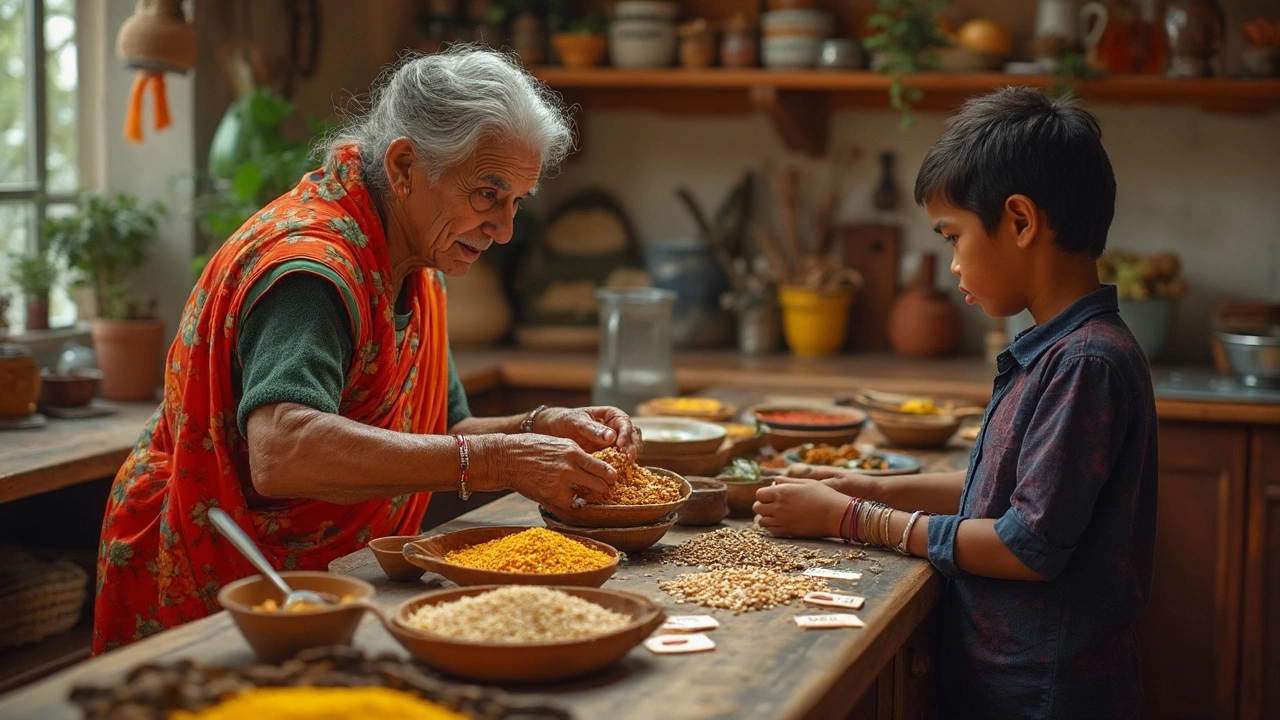Lentils: The Heart of Indian Home Cooking
When cooking with lentils, small, protein‑rich pulses that have fed Indian families for centuries. Also known as dal, they serve as a versatile base for soups, stews, and side dishes across the subcontinent. lentils bring a subtle earthiness that pairs well with spices, herbs, and vegetables, making them a go‑to pantry staple for quick, nutritious meals.
From Pulse to Plate: Understanding Dal
In Indian kitchens, the term dal refers to the cooked preparation of lentils, often tempered with mustard seeds, curry leaves, and chilies. Dal can be thick like a stew or thin like a soup, and each region tweaks the spices to match local tastes. Whether it’s the buttery simplicity of toor dal or the robust flavor of chana dal, the dish showcases how a single ingredient can transform into dozens of meals.
Beyond flavor, protein in lentils makes them a cornerstone for vegetarian diets. A cup of cooked masoor dal delivers roughly 18 grams of protein, rivaling many meat portions. This high protein content, combined with fiber, iron, and folate, supports energy levels, muscle repair, and digestive health, which is why Indian families rely on dal for everyday nutrition.
Preparing lentils properly amplifies both taste and digestibility. Soaking lentils for 15‑30 minutes reduces cooking time, softens the seed coat, and helps break down anti‑nutrients that can cause gas. Skipping the soak isn’t a disaster, but you’ll notice a firmer texture and longer boil period. A quick rinse, a brief soak, then a good pressure‑cook or simmer gives you tender, fluffy lentils ready for seasoning.
India grows a wide range of lentil varieties, each with its own cooking profile. Masoor (red lentils) break down quickly, perfect for thick soups. Toor (pigeon peas) hold shape longer, ideal for the classic South Indian sambar. Moong (split yellow) cooks in minutes and is gentle on the stomach, making it a favorite for light, everyday meals. Even whole black gram (urad) finds its way into dosa batter and hearty stews. Knowing which variety suits your dish saves time and maximizes flavor.
All these pulses live at the core of Indian cuisine, a culinary tradition that balances heat, sourness, sweetness, and bitterness. From the mustard‑seed pop of a Gujarati dal to the coconut‑laden lentil curries of Kerala, the region‑specific adaptations illustrate how lentils adapt to local ingredients and cultural preferences. This adaptability keeps the cuisine fresh while preserving the comforting familiarity of a lentil‑based meal.
Modern Indian cooks often blend traditional techniques with convenient tools. Using a pressure cooker slashes simmer time, while a quick tempering (tadka) of cumin, garlic, and dried red chilies adds a fragrant finish. Pair lentils with seasonal veggies, a squeeze of lemon, or a drizzle of ghee to elevate the dish without extra effort. These simple tricks turn a humble pot of lentils into a satisfying, restaurant‑quality plate.
Below you’ll find a curated collection of articles that dive deeper into each aspect of lentils—from nutrition breakdowns and soaking myths to regional dal recipes and quick cooking hacks. Explore the posts to sharpen your skills, discover new flavor combos, and make lentils a star on your Sunday dinner table.

Dal vs Lentils: What's the Real Difference?
Ever wondered if dal and lentils are the same thing? This article breaks down what each term means, how they're used in cooking, and why it matters for your next meal. Learn the real difference, clear up common confusion, and pick up handy kitchen tips along the way. Practical advice for anyone eager to master dal at home. This is your go-to guide for getting the basics right, in plain English.